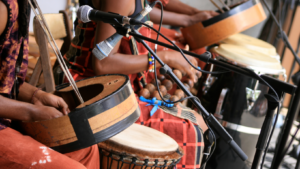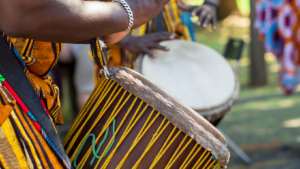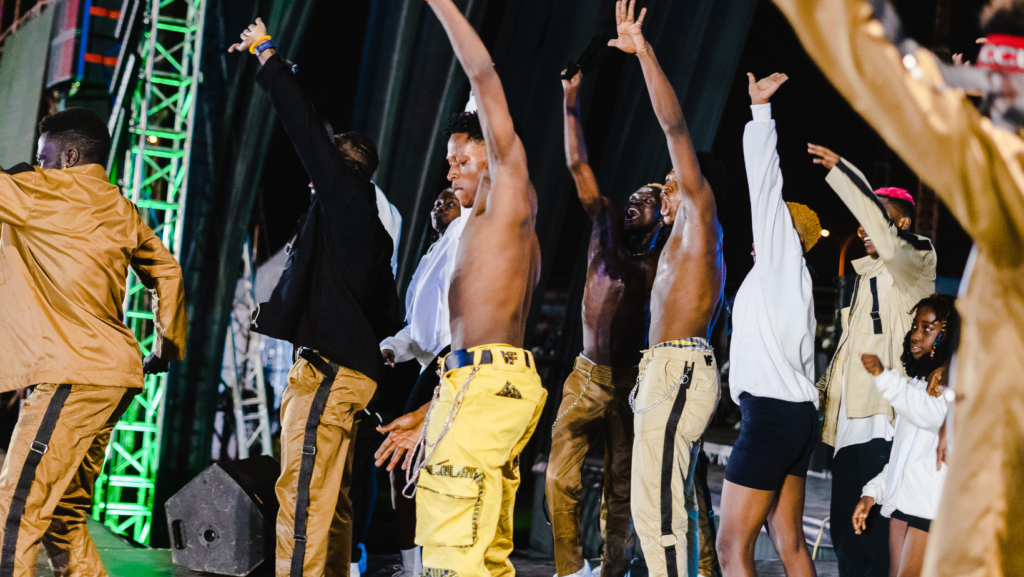African popular music, a vibrant tapestry of rhythms and melodies, has captivated audiences worldwide with its unique blend of traditional influences and modern innovation. From the infectious beats of Afrobeat to the soulful sounds of Highlife, African music has a rich history that continues to inspire and evolve. Its dynamic nature reflects the continent’s diverse cultures and stories, making it a powerful force in the global music scene.
As artists like Burna Boy and Yemi Alade gain international acclaim, African popular music is breaking boundaries and redefining genres. This musical movement not only celebrates Africa’s rich heritage but also addresses contemporary issues, resonating with listeners across the globe. The fusion of indigenous sounds with global trends creates a soundscape that’s both familiar and refreshingly new.
African Popular Music

African popular music originated from a fusion of indigenous sounds and external influences. In the 20th century, colonialism introduced Western musical styles to the continent, merging them with local rhythms and melodies. This blend gave rise to genres like Congo’s Soukous and Senegal’s Mbalax.
Urbanization and migration in the mid-1900s facilitated the cross-pollination of cultural sounds, leading to the evolution of diverse genres. This period saw Highlife’s growth in West Africa and the emergence of Afrobeat in Nigeria, pioneered by Fela Kuti.
Influential Artists And Bands
African popular music owes much of its success to visionary artists and bands who have pushed boundaries and introduced new sounds. These musicians have paved the way for both historical and contemporary recognition of African music on the global stage.
Pioneering Musicians
Pioneering artists laid the groundwork for modern African music through innovation and creativity. Fela Kuti, a Nigerian musician, introduced Afrobeat by blending Yoruba rhythms with jazz and funk. Miriam Makeba, known as “Mama Africa,” used her powerful voice to address apartheid and other social issues through jazz-infused South African music. Franco Luambo, a Congolese guitarist, shaped Soukous, influencing the region’s dance music. Each of these musicians contributed to the African soundscape, establishing a legacy that continues to inspire future generations.
Modern Icons
Modern icons have continued evolving African music while gaining international fame. Burna Boy, with his fusion of Afrobeats, dancehall, and reggae, has captured audiences worldwide. Yemi Alade’s energetic performances and multilingual songs highlight the diversity of African cultures. Wizkid, another notable figure, collaborates with international artists, expanding the global reach of Afrobeat. These contemporary artists continue to redefine African popular music, ensuring its relevance and influence on a global scale.
Genres And Styles
 African popular music encompasses various genres and styles reflecting its rich cultural heritage. Notable genres include Afrobeat, Highlife, and Kwaito, each offering unique sounds and narratives.
African popular music encompasses various genres and styles reflecting its rich cultural heritage. Notable genres include Afrobeat, Highlife, and Kwaito, each offering unique sounds and narratives.
Afrobeat combines West African musical styles with jazz and funk. Originating in Nigeria, Fela Kuti pioneered Afrobeat’s creation in the late 1960s. The genre features rhythmical complexity, brass instruments, and socially conscious lyrics. Modern artists like Burna Boy continue Kuti’s legacy by infusing contemporary themes into their Afrobeat tracks.
Highlife
Highlife originated in Ghana in the early 20th century. It blends Akan rhythms with Western instrumentation, incorporating elements of jazz and swing music. Known for its melodic guitar lines and brass sections, Highlife communicates cultural stories and experiences. Artists like E.T. Mensah and Osibisa popularized the genre, while modern musicians continue to innovate within this style.
Kwaito
Kwaito emerged in South Africa during the 1990s as a fusion of house music, hip-hop, and traditional African sounds. Recognizable by its slow tempo and deep basslines, Kwaito often includes lyrics in multiple South African languages. Artists like Arthur Mafokate and Mdu Masilela contributed to Kwaito’s rise, making it synonymous with post-apartheid cultural identity.
Other Popular Genres
 Beyond the specific genres of Afrobeat, Highlife, and Kwaito, African popular music includes styles like Soukous, Mbalax, and Bongo Flava. Soukous, with roots in Congo, is known for its fast-paced dance rhythms and guitar solos. Mbalax hails from Senegal, blending traditional Wolof drumming with jazz and funk influences. Bongo Flava, emerging from Tanzania, showcases Swahili lyrics over hip-hop and R&B beats. Each genre demonstrates African music’s dynamic and adaptable nature on the global stage.
Beyond the specific genres of Afrobeat, Highlife, and Kwaito, African popular music includes styles like Soukous, Mbalax, and Bongo Flava. Soukous, with roots in Congo, is known for its fast-paced dance rhythms and guitar solos. Mbalax hails from Senegal, blending traditional Wolof drumming with jazz and funk influences. Bongo Flava, emerging from Tanzania, showcases Swahili lyrics over hip-hop and R&B beats. Each genre demonstrates African music’s dynamic and adaptable nature on the global stage.

